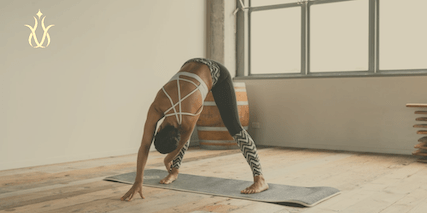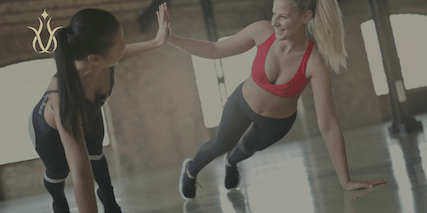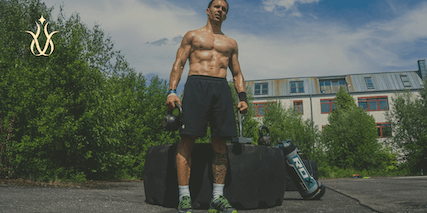Deciding between Pilates and Yoga can be challenging as both offer unique benefits for mind and body wellness. Our comprehensive guide dives into the core principles, health benefits, and physical demands of each practice. Discover how Yoga emphasizes flexibility, mental focus, and deep breathing to enhance overall well-being, while Pilates focuses on strength, muscle toning, and core stability. We also examine the suitability of each for various health conditions and fitness objectives.
Whether you’re looking to relieve stress, improve posture, or build core strength, our side-by-side comparison will help you determine which practice—Pilates or Yoga—is the best match for your personal health and fitness goals.
Introduction
Stepping onto the wellness scene, two practices stand out with their promises of strength, balance, flexibility, and mental tranquillity: Pilates and Yoga. For those new to the wellness journey or those considering diversifying their routines, the debate between Pilates and Yoga often arises. This comparison is relevant because while they seem to bear similar traits, the two modalities approach wellness from uniquely nuanced perspectives.
Historical Background of Yoga and Pilates
Delving into the history and development of both practices provides a context that further illuminates their philosophies, goals, and techniques.
Origins of Yoga
On the other hand, Yoga is an ancient practice hailing from India around 5,000 years ago. Rooted in spiritual philosophy, Yoga was initially more focused on mental practices such as meditation, with the physical postures (asanas) playing a secondary role.
However, over the centuries, Yoga transformed significantly. It has now split into various schools, each with its distinct style. Some of these styles emphasise the original spiritual aspects (like Kundalini Yoga), some focus on precise alignment (such as Iyengar Yoga), and others prioritise vigorous movement (like Ashtanga and Vinyasa Yoga). Regardless of the variation, the common thread uniting all Yoga styles is the pursuit of balance between body, mind, and spirit.
Origins of Pilates
The Pilates method, initially known as “Contrology,” traces its roots back to the early 20th century, spearheaded by Joseph Pilates, a German physical trainer. A personal history of illness drove Pilates to create a method to enhance physical and mental health. His philosophy integrated Western exercises with Eastern mindfulness, forming the groundwork for what we now know as Pilates.
Throughout the decades, Pilates evolved, with advancements in sports science informing the method’s refinement. The diversity in practice today, from mat to equipment-based classes, reflects this ongoing evolution. Moreover, adaptations to suit different groups, such as pre/postnatal women, athletes, seniors, and rehabilitation patients, attest to the versatility of Pilates.
Core Principles of Yoga and Pilates
At the heart of both Yoga and Pilates are core principles guiding each practice. While they differ in origin and emphasis, these principles intersect to promote mindfulness and balance in the practitioner.
Principles of Yoga
According to the ancient sage Patanjali, Yoga practice is guided by the Eight Limbs of Yoga, as outlined in the Yoga Sutras. These limbs form a practical guide for ethical conduct, self-discipline, physical postures, breath control, sensory withdrawal, concentration, meditation, and self-realisation.
The first two limbs, Yama and Niyama, establish ethical and moral standards for living.
The third limb, Asana, refers to the physical postures practised in Yoga. It promotes discipline and physical strength, preparing the body for meditation.
The fourth limb, Pranayama, involves breath control, designed to link the mind, body, and spirit.
Pratyahara, the fifth limb, encourages sensory withdrawal to internalise one’s focus.
Dharana, the sixth limb, focuses on concentration, drawing the mind to a single point of attention.
The seventh limb, Dhyana, means meditation or awareness without focus, setting the stage for the final limb.
The eighth and final limb is Samadhi or enlightenment, the ultimate goal of Yoga practice, embodying a state of ecstasy and realisation of the connection with the divine.
While both Yoga and Pilates share common themes of mindfulness, concentration, and breath control, their principles offer unique perspectives, contributing to their distinctive benefits and appeal.
Principles of Pilates
The Pilates method revolves around six core principles: concentration, control, centre, flow, precision, and breathing.
Concentration in Pilates speaks to the mind-body connection, calling for full engagement of one’s attention to perform each movement accurately.
Control, also known as “Pilates Controlology”, involves consciously regulating every movement to maximise efficiency and avoid injury.
The centre-centre principle refers to the concept of the “Powerhouse” in Pilates, comprising the muscles of the core, hips, lower back, and buttocks, from which all movements should originate.
Flow encourages smooth, continuous movements, promoting grace and efficiency beyond the workout session into daily activities.
Precision calls for exactitude in every movement, emphasising quality over quantity. The aim is to perform fewer repetitions but with greater attention to detail.
Lastly, breathing in Pilates is a conscious, coordinated effort synchronised with movement aimed at facilitating muscle contraction and enhancing the oxygenation of tissues.
Postures and Movements in Yoga and Pilates
The distinctiveness of Pilates and Yoga also lies in their unique postures, movements and physical poses. These movements and poses are not just exercises but also a means of fostering greater mindfulness and body awareness.
Key Pilates Movements
Pilates offers a range of movements, each targeting different muscle groups, promoting control and precision. Here are a few essential exercises:
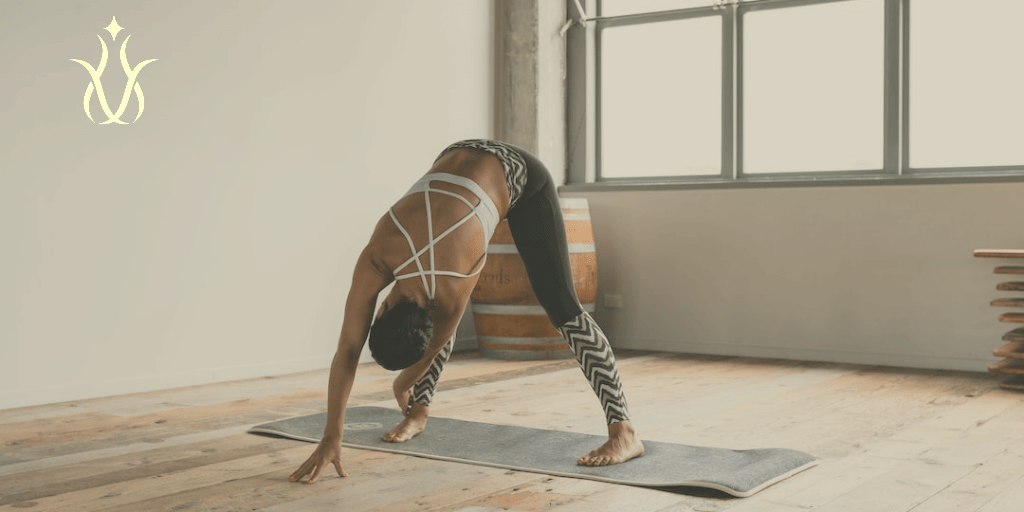
The Hundred: This Pilates movement aims to strengthen the abdominal muscles, improve circulation, and coordinate breath and movement.
Pilates Roll Up: A challenging exercise that strengthens the core and promotes spinal articulation.
Swan Dive: This movement enhances back extensor strength, improving posture and counteracting our hunched posture during daily activities.
These movements contribute to overall health and fitness by improving muscle tone, enhancing core muscles strength, and promoting better posture. They also incorporate the Pilates principles, fostering mind-body awareness.
Key Yoga Poses
Yoga poses, also known as ‘asanas’, offer a variety of health and wellness benefits. Let’s explore a few fundamental poses:
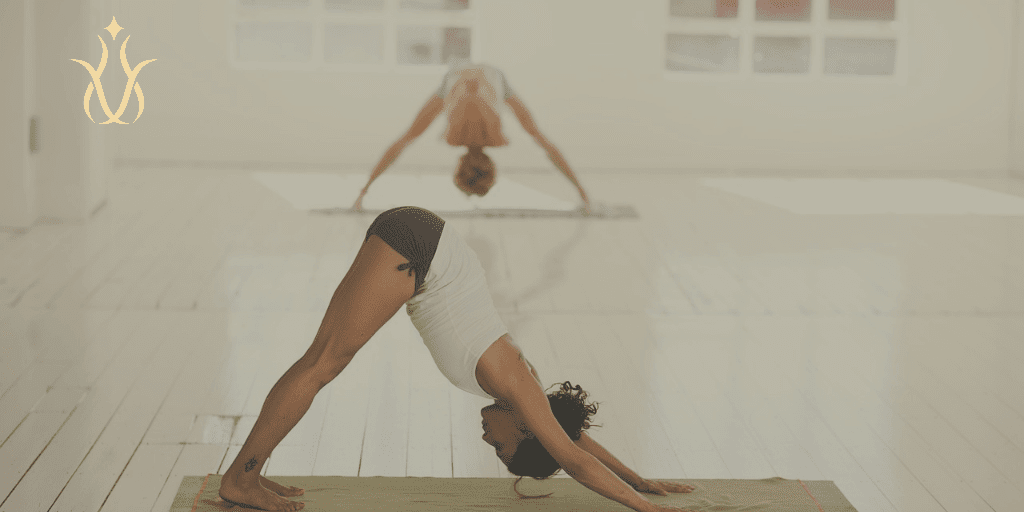
Mountain Pose (Tadasana): This foundational pose aids in establishing balance and grounding.
Downward-Facing Dog (Adho Mukha Svanasana): A ubiquitous pose in many yoga classes, it stretches and strengthens many parts of the body, promotes circulation, and offers a mild inversion.
Child’s Pose (Balasana): This restorative pose gently stretches the back, hips, and thighs while promoting relaxation and stress relief
These yoga poses contribute to overall health and wellness by enhancing flexibility, promoting relaxation, and fostering a deeper mind-body connection. With regular practice, Yoga practice can help manage stress, improve posture, and enhance overall well-being.
Through these distinct movements and postures, Pilates and Yoga offer different pathways towards enhanced health and fitness. Depending on individual goals and preferences, one may find one practice more appealing or beneficial than the other.
Equipment Used in Yoga and Pilates
The tools and equipment used in both Pilates and Yoga serve to enhance practice, provide support, and increase exercise variability. These tools also reflect the unique philosophy and focus of each discipline.
Yoga Equipment
In contrast to Pilates, Yoga often requires less specialised equipment. However, certain props can enhance the practice by providing support, aiding alignment, and accommodating various levels of flexibility. Some common yoga props include:
Yoga Mat: Provides cushioning and grip, facilitating comfortable practice
Blocks: Used for support, alignment, and making poses more accessible
Straps: Help to extend the reach and deepen stretches.
Bolsters: They offer support and comfort during restorative poses and meditation
These props can enhance yoga practice, making it more comfortable, safe, and accessible. They are especially beneficial for beginners and those with limited flexibility.
Pilates Equipment
In Pilates studios, a range of apparatus has been designed to offer resistance, provide support, and help practitioners perform exercises with the correct form. Here are some key tools:
Reformer: The Pilates Reformer is perhaps the most renowned apparatus. It consists of a carriage that moves back and forth along tracks within a frame, utilising spring resistance to challenge and support the body.
Cadillac or Trapeze Table: This versatile equipment features a variety of bars, straps, and springs, offering a comprehensive range of exercises.
Pilates Chair: It provides an intense workout and helps to improve balance, coordination, and strength.
These tools are instrumental in enhancing the Pilates practice, adding resistance to movements and providing the support necessary to execute exercises with proper alignment and control.
Understanding the equipment used in Yoga or Pilates class can help practitioners maximise their practice and benefits. Whether using a Pilates Reformer to add resistance or a yoga block to perfect alignment, these tools can be integral to successful practice.
Benefits of Yoga and Pilates
Both Yoga and Pilates offer many benefits for physical and mental health. So whether you’re looking for enhanced strength and flexibility or mental benefits, these time-tested methods have something to offer everyone.
Physical Health Benefits of Yoga and Pilates
Pilates and Yoga are more than just exercise regimens; they are holistic systems contributing to overall physical health.
Yoga:
Yoga, on the other hand, is renowned for enhancing flexibility and balance. Additionally, it can improve strength, particularly upper body strength, as found in a study published in the International Journal of Yoga. This unique combination of strength and flexibility offered by Yoga can help to alleviate chronic pain, improve posture, and enhance overall fitness.
Pilates:
Pilates is recognised for its focus on the core muscles – the powerhouse of the body. Emphasizing correct alignment, precision, and control aids in developing strength. Research also underscores the role of Pilates in improving balance and flexibility. For example, in a study published in the Journal of Physical Therapy Science, older adults who practised Pilates showed significant improvements in balance and flexibility after five weeks.
Mental Health Benefits of Yoga and Pilates
The journey of Pilates and Yoga extends beyond physical health, playing a pivotal role in fostering mental wellness.
Yoga:
Yoga’s roots in spiritual traditions underscore its profound effects on mental health. Numerous studies highlight the benefits of regular Yoga practice in reducing anxiety, depression, and stress. For example, a review of 15 studies found that individuals who practised Yoga experienced lower stress and anxiety levels.
Pilates:
Joseph Pilates developed his method as a way of integrating body and mind. Pilates can reduce stress and promote relaxation by encouraging mindfulness and focused breathing. A Complementary Therapies in Clinical Practice study demonstrated that a 12-week Pilates program significantly reduced stress levels in female participants.
Both Yoga and Pilates, despite their unique approaches, share a common thread: their emphasis on the unity of mind and body. They offer ways to enhance physical fitness while also fostering mental well-being, truly embodying a holistic approach to health.
Suitability for Different Fitness Levels (Pilates vs Yoga)
Each body is unique and deserves a fitness approach that honours its individuality. Thankfully, both Pilates and Yoga can be adapted to suit different fitness levels. Whether you’re an absolute beginner or a seasoned practitioner, there’s a path for you in both disciplines. Let’s explore this further.
Pilates for Different Fitness Levels
Pilates offers a versatile approach to fitness, suitable for beginners and advanced practitioners alike.
Beginners:
For newcomers, Pilates focuses on mastering basic movements and building core strength. Exercises such as the Pelvic Curl, the Clamshell, and the Hundred, allow beginners to grasp Pilates principles in a simplified manner. Beginners are always advised to learn from a certified pilates instructor.
Intermediate:
As you progress, exercises become more complex, integrating multiple muscle groups. Movements like the Teaser and the Open Leg Rocker challenge balance and coordination, enhancing body strength and flexibility.
Advanced:
Advanced Pilates practitioners take their fitness to a new level, performing exercises with control and precision. High-level movements like the Control Balance and the High Bridge challenge the body and the mind, pushing the limits of strength and flexibility with their Pilates teacher.
Yoga for Different Fitness Levels
Like Pilates, Yoga can also be moulded to suit varying fitness levels.
Beginners:
Gentle Yoga styles like Hatha Yoga and Yin Yoga are great starting points. They incorporate fundamental poses (asanas), such as Mountain Pose (Tadasana) and Downward Dog (Adho Mukha Svanasana), and emphasise correct alignment and mindful breathing. A good yoga teacher will help the beginner start on the right path and avoid injury.
Intermediate:
At the intermediate level, styles like Vinyasa Flow offer a dynamic practice, linking breath with movement. This increases strength and flexibility while enhancing cardiovascular health.
Advanced:
For those seeking an intense workout, Ashtanga Yoga offers a demanding sequence of asanas. It challenges endurance, flexibility, and strength.
Regardless of your fitness level, Both Yoga and Pilates provide paths that meet you where you are. In addition, they offer opportunities for continuous growth, ensuring that you can keep challenging yourself as your fitness journey evolves.
How to Choose Between Pilates and Yoga
When choosing between Yoga or Pilates class, there’s no one-size-fits-all answer. Instead, the right choice depends on a host of personal factors, from your fitness goals and lifestyle to your health conditions and class preferences.
Personal Fitness Goals:
Pilates might be the better fit for you if your goal is to improve core strength, posture, and muscular balance. Pilates focuses on developing strength from the body’s core by improving the coordination of muscles around the centre of your body.
On the other hand, if you are looking for stress management and enhanced mindfulness, along with the physical benefits of flexibility and balance, Yoga might be more suited to your needs. With its roots in ancient spiritual traditions, Yoga offers a holistic approach that integrates the mind, body, and spirit.
Lifestyle:
Suppose you enjoy fast-paced, high-energy workouts and like to see concrete progress. Then, Pilates, with its structured levels, could be appealing. But, on the contrary, if you seek a more relaxed and calming fitness routine that focuses on meditation and spiritual growth, Yoga can provide a more holistic approach.
Health Conditions:
Both Pilates and Yoga can be modified to suit various health conditions. For instance, Pilates exercises can be adjusted to provide a controlled rehabilitation environment if you’re recovering from an injury. In contrast, if you suffer from stress or anxiety, the meditative aspects of Yoga can offer relief and promote mental well-being.
Class Preferences:
Lastly, your preference for group classes or one-on-one sessions may also guide your choice. For example, both Pilates classes and Yoga classes can be practised in groups or individuals. Some people enjoy the community feeling of group classes, while others prefer tailored guidance with personal sessions.
Conclusion
In the end, it’s all about finding what works for you. Pilates and Yoga offer various benefits, each unique in its essence. The choice is not about Pilates versus Yoga, but rather Pilates AND Yoga. In other words, it’s about understanding your health and wellness goals and then identifying which practice—or perhaps a combination of both—best supports those objectives.
While Pilates is an excellent choice for those focused on building core strength, improving posture, and enhancing muscular balance1, Yoga can offer the added dimensions of spirituality, mindfulness, and stress management. In addition, both practices promote increased flexibility, better balance, and overall physical and mental wellness.
Try both Pilates and Yoga to get a firsthand experience of each. Remember, your fitness journey is deeply personal, and the ‘best’ choice is the one that resonates most with you. Listen to your body and mind—they are your best guides.
The Pilates versus Yoga debate doesn’t have to be an either-or proposition. Each practice offers its unique strengths, and there can be immense value in incorporating both into your fitness routine.
Frequently Asked Questions
What is the difference between Yoga and Pilates?
Yoga and Pilates are both popular forms of mind-body exercise that can improve strength, balance, flexibility, and mental awareness. However, they have different origins, philosophies, and techniques.
Yoga:
- Origins and Philosophy: Yoga has its roots in ancient India and is more than 5000 years old. It’s a comprehensive discipline that integrates physical postures, breathing exercises, meditation, and ethical principles. Yoga is also often associated with spiritual and philosophical elements, aiming to promote unity among the mind, body, and spirit.
- Techniques: Yoga usually involves a variety of postures (asanas) and incorporates deep breathing exercises (pranayama) and meditation. The asanas can range from gentle to challenging, depending on the style of yoga (e.g., Hatha, Vinyasa, Ashtanga, Bikram, etc.).
- Benefits: Yoga is known to improve flexibility, strength, balance, and mental clarity. It’s also used for stress reduction and relaxation. Certain styles of yoga can also be a good source of aerobic exercise.
Pilates:
- Origins and Philosophy: Pilates was developed by Joseph Pilates in the 20th century as a form of rehabilitation and body conditioning. The primary focus of Pilates is on strengthening the core (the muscles of the abdomen, lower back, and hips, often referred to as the ‘powerhouse’ in Pilates) to improve overall fitness and well-being.
- Techniques: Pilates exercises are typically performed on a mat (Mat Pilates) or using special equipment, like the Reformer, Cadillac, and Wunda Chair. The movements in Pilates are more structured and controlled compared to yoga, with an emphasis on alignment, precision, and coordination.
- Benefits: Pilates helps improve posture, core strength, muscle tone, flexibility, and balance. It can also enhance mind-body awareness, focus, and stress management.
In summary, while both Yoga and Pilates provide physical and mental benefits, they differ in their approach. Yoga is more holistic, incorporating spirituality, meditation, and deep breathing, while Pilates is more focused on physical conditioning, particularly core strength and stability.
Which is better for beginners – Pilates or Yoga?
Both Pilates and Yoga can be adapted to suit beginners. In Yoga class, there are beginner-friendly styles like Hatha and Restorative yoga. Similarly, beginner classes in Pilates focus on controlled movements and core strengthening. Always start with beginner classes and ensure you learn the correct form to avoid injuries.
Is Pilates or Yoga better for weight loss?
Both Pilates and in particular hot yoga and power yoga can aid in weight loss, but not in the same way as high-intensity interval training (HIIT) or cardio workouts might. They help tone muscles and increase your metabolic rate, leading to more efficient calorie burning. However, for significant weight loss, these practices should be complemented with a balanced diet and other forms of exercise.
Can I do both Pilates and Yoga?
Absolutely! Many people find that combining Pilates and Yoga in their workout routine offers them the best of both worlds – the strength and stabilisation benefits of Pilates with the flexibility and relaxation advantages of Yoga.
Which is better for stress relief – Pilates or Yoga?
While both practices promote mindfulness and can reduce stress, Yoga often places a stronger emphasis on relaxation and stress relief. Styles such as Restorative Yoga and Yin Yoga are particularly beneficial for mental wellbeing, calming the mind and relieving tension in the body.
Which is better for back pain – Pilates or Yoga?
Both Pilates and Yoga can be beneficial for back pain. Pilates strengthens the core, improving posture and alignment, which can alleviate back pain. Conversely, yoga can enhance flexibility and relieve tension, which also helps with back pain. Always consult with a medical professional before starting any exercise routine, especially if you have chronic back pain and ensure that your yoga teacher or pilates teacher is aware of any injuries you may have.
Whether you choose Pilates class or Yoga class, both practices offer numerous health benefits. It often comes down to personal preference and what you aim to achieve with your exercise routine. Always listen to your body, take your time, and enjoy the journey to improved wellness.
Note: Always seek professional medical advice before starting any new exercise routine. The information in this blog post is meant to be informative and educational and should not replace professional medical advice.
Resources:
WebMD (2021). Difference Between Pilates and Yoga. Available at: https://www.webmd.com/fitness-exercise
Healthline. Pilates vs. Yoga: The Differences and What’s Right for You. Available at: https://www.healthline.com/health/fitness-exercise
Fernández-Rodríguez R et al (2021). Effectiveness of Pilates and Yoga to improve bone density in adult women: A systematic review and meta-analysis. Available at: https://pubmed.ncbi.nlm.nih.gov/33961670/
Dunleavy K et al (2016). Comparative effectiveness of Pilates and yoga group exercise interventions for chronic mechanical neck pain: quasi-randomised parallel controlled study. Available at: https://pubmed.ncbi.nlm.nih.gov/26435334/
Disclaimer: This article is for informational purposes only and should not replace professional medical advice. If you have specific concerns or medical conditions, it is recommended to consult with a healthcare professional for personalised guidance and support.
Related Articles:
The Benefits of Tai Chi: A Comprehensive Guide
https://theaoj.co.uk/best-yoga-retreats-in-the-world/
